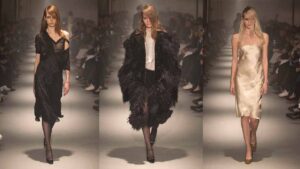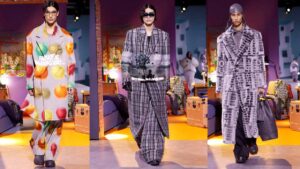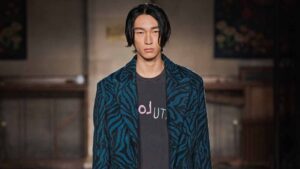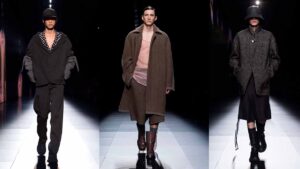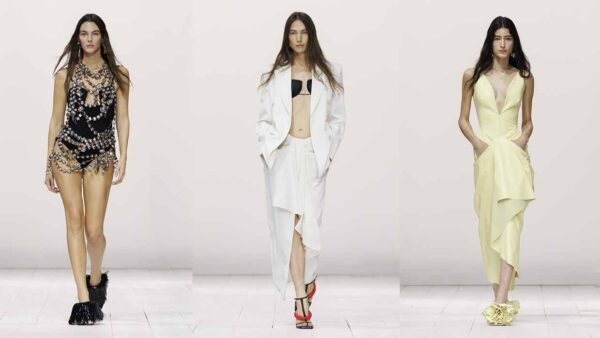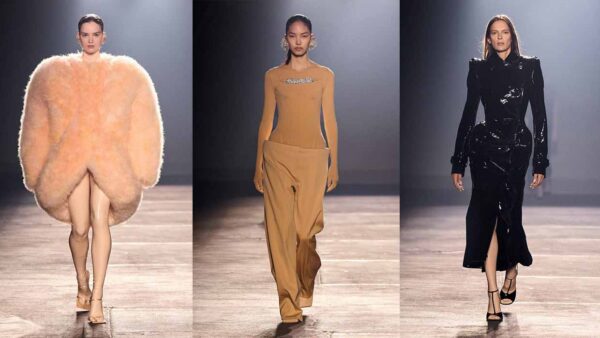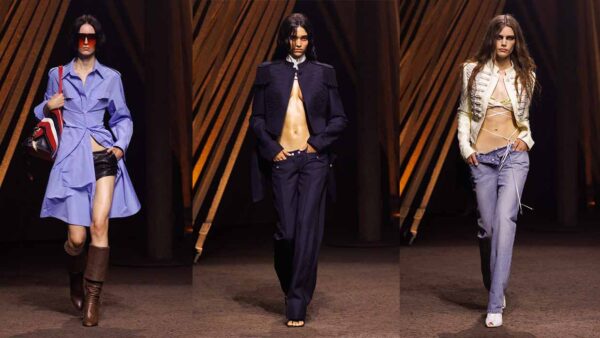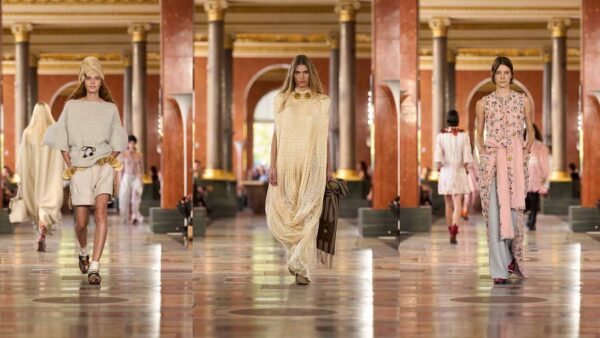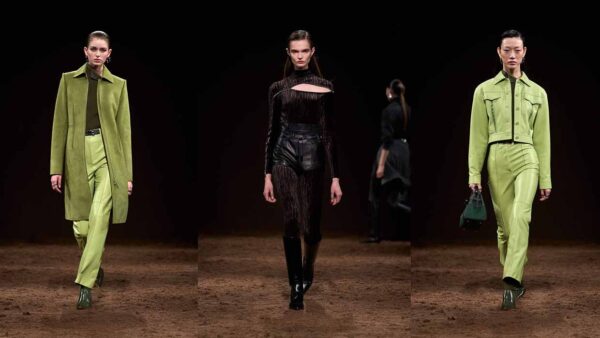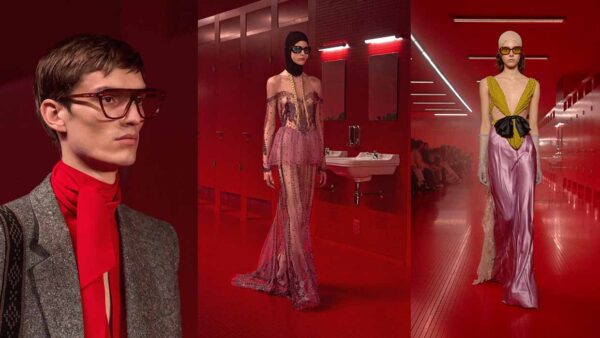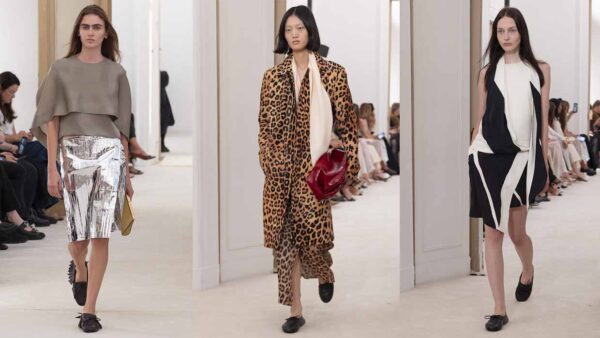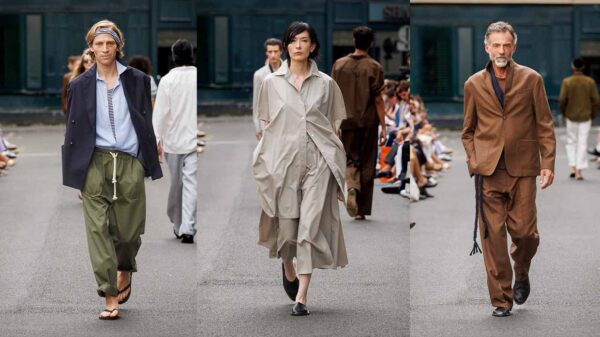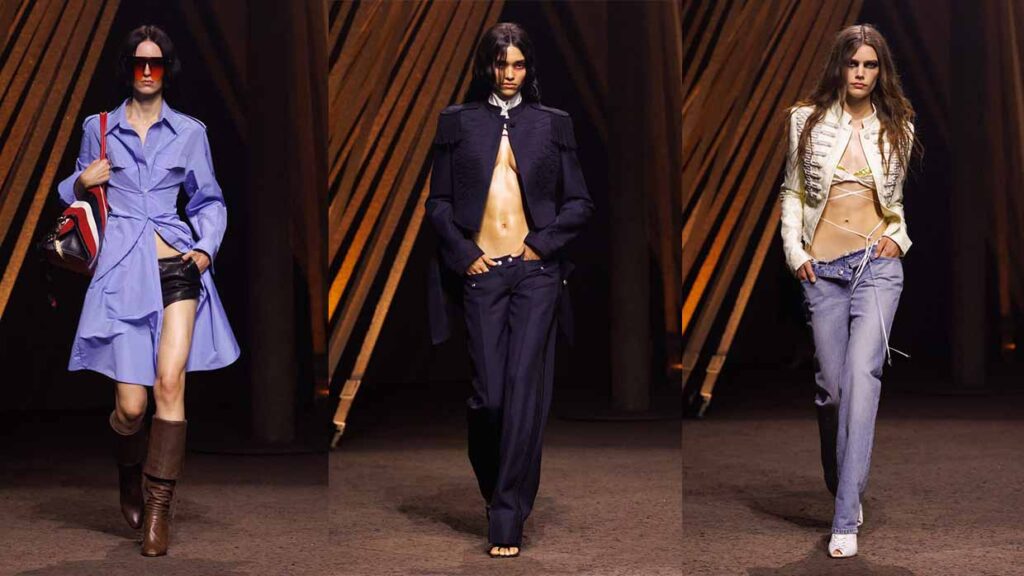
There was a febrile charge in the air at the Alexander McQueen Spring/Summer 2026 show in Paris — that unmistakable mix of anticipation and awe that sweeps through a room moments before the first look appears. Under Seán McGirr’s creative direction, McQueen has entered a new phase of sensual disquiet — a realm where the primal collides with the precise, and where instinct finally overpowers control.
Staged amid the electric afterglow of Paris Fashion Week, McGirr’s show unfolded like a ritual — a dialogue between discipline and desire. Inspired by The Wicker Man (Robin Hardy, 1973), the collection explored the push and pull between uniform order and the wild chaos of nature, reimagining the house’s codes through a fevered, modern lens.
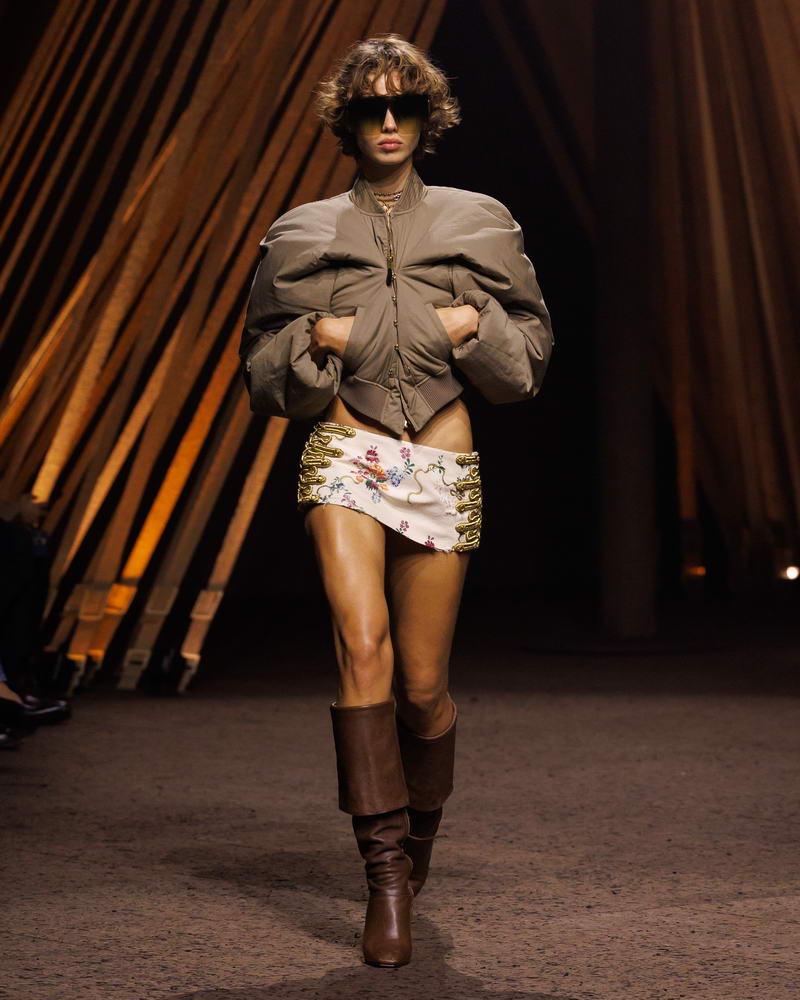
The legendary McQueen sharpness was there — but its edges were softened, blurred. Officer jackets, once emblems of restraint, came undone, sliced with displaced patch pockets and softened by subversive cuts. Bustier dresses borrowed uniform fabrics only to betray them, slashed and reconfigured into new forms of feminine strength. It was McQueen tailoring at its most daring: rigorous yet ravaged, sculptural yet streetwise.
There was an undeniable physicality to the collection — garments that seemed to move with desire. Shirting and poplin dresses were cinched and pulled taut, while skirts and trousers sat low, reviving the house’s notorious “bumster” with a polished, adjustable buckle. McGirr’s women were neither constrained nor coy. Corsetry appeared, but freed from tradition — not to bind the body, but to echo its rhythm in jacquard dresses and boots that gleamed under the lights.
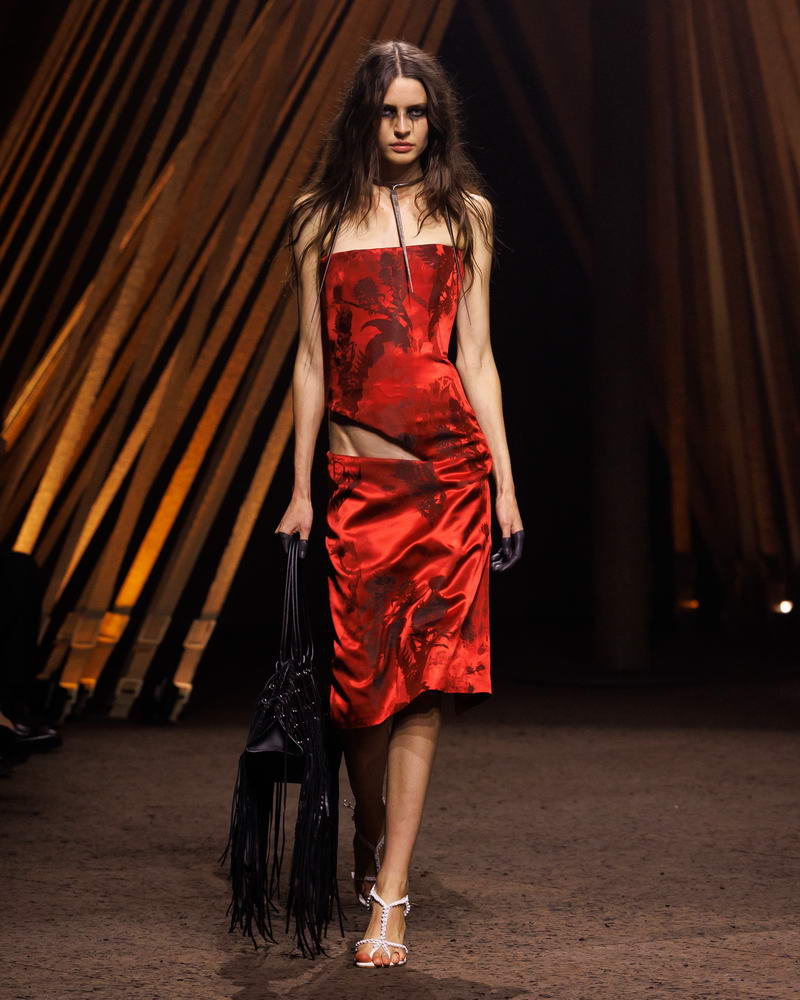
As the show progressed, the atmosphere grew more primal, almost feverish. Nature, once restrained, began to bloom — or perhaps burn. Abstracted insect prints rippled across parachute silk gowns; dresses appeared scorched, their spray-painted dégradé fading into embers of sequins and fire embellishment. Layers of silk chiffon cascaded into flaming tendrils, flickering like breath. It was McQueen drama at its most elemental — a climax of beauty teetering on the edge of destruction.
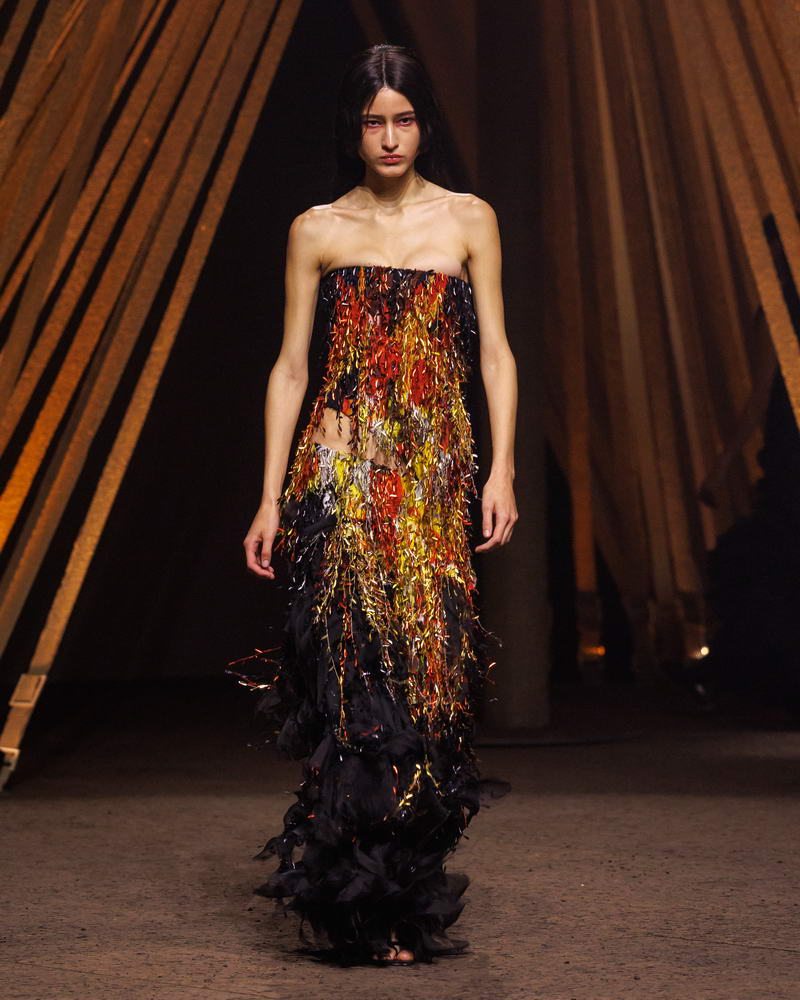
Fabrics carried contradictions: sharply cut wool mohair-hopsack met sliced printed leather and molten chainmail, tempered by delicate floral jacquards and sunburst silk habotai. Each look balanced severity and softness, echoing the show’s central question — what happens when instinct finally overrules order?
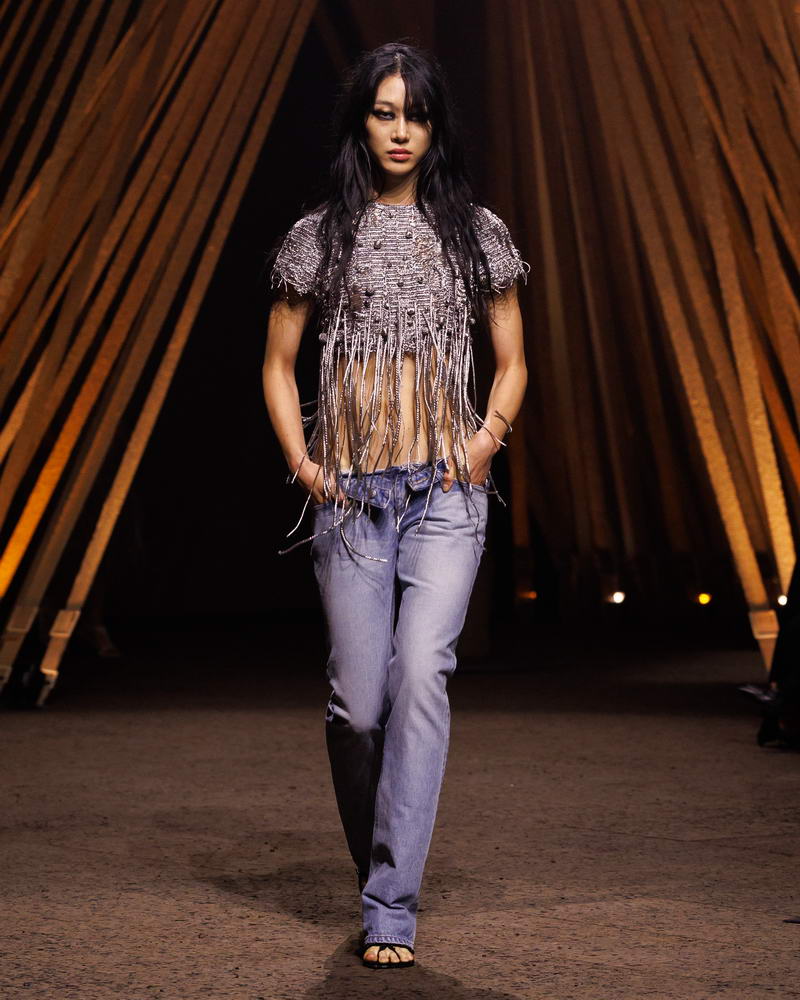
Accessories pulsed with the same dual energy. The Manta bag — a reinterpretation of the archival De Manta — appeared with corset lacing, fringing, flame embellishment, and the house’s signature skull scarf. Shoes revived McQueen’s 2003 horn-shaped heel, applied to mules, tall boots, and sandals in sculpted leather and floral jacquard. Jewelry drew from folklore — scissors, insects, and wishbones glimmered as talismans of transformation.
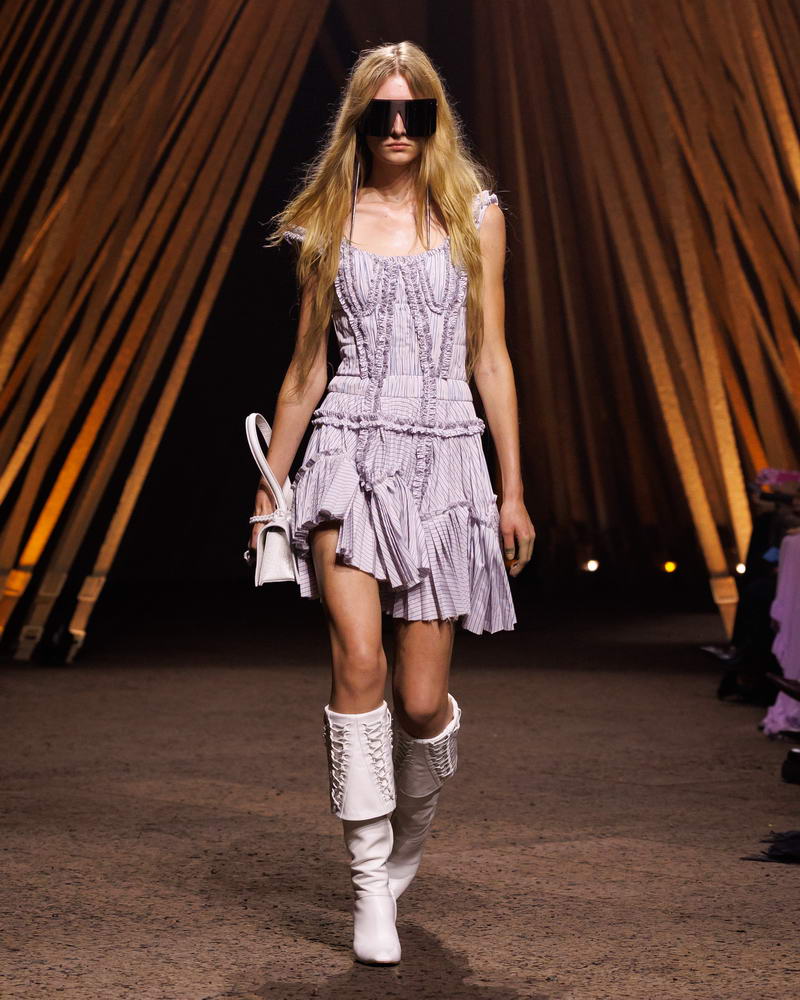
By the end, the air felt charged — a collective exhale as the lights dimmed. McGirr’s Spring/Summer 2026 wasn’t about choosing between restraint and rebellion, but about living in the exquisite tension between them. A collection that asks, as McGirr himself does: what does it take to stir and submit to that primal drive?
At Alexander McQueen, the answer — as ever — lies somewhere between danger and desire, instinct and intellect, nature and the sublime.

